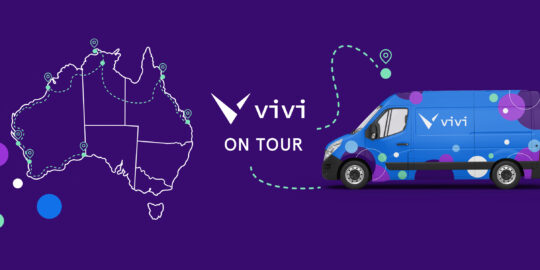
Technology is fast becoming a staple feature in educational settings. According to EdSurge, around 1327 school districts were using EdTech tools at the beginning of 2021.
The pandemic and advancement in EdTech have encouraged more teachers and school districts to integrate technology into their classrooms. For teachers, it’s now more important than ever to stay ahead of the curve and include technological elements in their lessons.
If you’re a teacher, a school administrator, or a district IT leader and you want to know how to integrate technology in the classroom, this is the article for you. We’ll talk about six unique ways to use technology in a classroom setting, and discuss how screen mirroring software can help you share engaging educational resources with classes of all ages.
How to Integrate Technology in the Classroom: 6 Engaging Methods
1. Gamified learning
Gamification is the process of turning regular learning into an engaging game for your students. Gamified learning is highly effective when technology is involved. Think about it, in this day and age, kids love to play mobile games, and it’s super easy to introduce these technological elements into your own lessons.
Some teachers shy away from the idea of using games in the classroom due to fears that they will distract students from the actual course content. However, by using digital tools, you can create your own games and quizzes centered around the curriculum you are teaching and focus on providing students with key information and knowledge.
Apps like ClassDojo, GimKit, and Kahoot! all allow teachers to build quizzes and games and even allow you to establish a digital merit system for your students. The more games they play, the more points they earn, and you can view how much studying or, in this case, gaming each student has been doing during class and at home.
Gamified learning is excellent for kids using their own devices and working independently, but it can also be used to engage the whole class in collaborative quizzes and games. By integrating gamification apps with screen mirroring software, the teacher can share games on a central classroom display to the whole class.
Overall, gamified learning is a great way to bring technology into the classroom and make learning more fun and engaging, especially for younger students.
2. Video-based lessons
Videos are an excellent way to capture students’ attention and deliver content in an easy and understandable way. YouTube and other video-sharing platforms are goldmines when it comes to finding suitable educational content for students of all ages.
Not only that, but you can also use resources like TedEd and BBC Bitesize that are specifically designed for teachers and students. You can easily plan whole lessons around videos, discuss them and create work inspired by the video.
Teachers can even encourage students to create their own video projects as an alternative to essays and presentations, and then share them digitally using a screen mirroring device. Students love to engage with video content, and for different types of learners, utilizing videos in the classroom can be essential to their success.
Traditionally, sharing videos with a class meant booking a TV with a DVD player, wheeling it into your classroom, and loading it up. As many teachers will know, this method was fraught with technical issues and consumed precious classroom time.
However, sharing videos during lessons is now easier than ever for teachers. With screen mirroring software, you can easily share a video from your own device with the class on a flat panel display, TV, smartboard, or projector screen. Some solutions will also allow you to queue videos so that you can seamlessly skip between clips without missing a beat.
Related: [How to Use Tablets in the Classroom]
3. Digitally sharing work and providing feedback
Another way to integrate technology into your classroom is to digitally share students’ work and provide feedback.
Providing on-the-spot feedback digitally can also help teachers save time. Instead of printing tons of resources and spending time marking them by hand after class, you can digitally provide feedback to students throughout the lesson and encourage them to peer review their work. This will also reduce the wastage of paper.
It’s an unconventional approach to feedback, but it can often be more effective than giving students comments and grades after the lesson is over.
Not only that but sharing work and providing feedback digitally is a great way to start a discussion within your class, and it encourages students to collaborate and analyze each other’s work and share ideas and praise.
By using screen mirroring technology, you can easily present student projects onto a classroom display. Some screen mirroring solutions also allow you to provide students with instant feedback digitally, a great way to get students more involved in the lesson and encourage them to analyze their own work critically. Certain digital apps can also provide features for the teacher and the students to annotate a piece of work and highlight the pros and cons.
4. Digital fields trips
In this pandemic era, it can be tough to get the kids out of the classroom and into the big wide world.
With restrictions and lockdowns constantly changing the way businesses operate, arranging class field trips to indoor locations like museums, art galleries, and other educational venues is more complicated than ever. However, this doesn’t mean that your students have to miss out on important cultural and educational events like concerts and museum exhibitions.
With the help of technology, you can bring these events right into your classroom and allow your students to enjoy them virtually. Resources such as Google Arts and Culture can allow students to view famous artworks and galleries in 360° view.
It also allows students to experiment with art and culture and explore destinations around the world without leaving the classroom. You can also go on walking tours of famous cities, museums and art galleries along with creators on YouTube. Additionally, many orchestras and ballets can be accessed via live stream online.
To fully enjoy resources like this, it’s essential to have a system in place that allows the whole class to view the content in HD quality. The best solution for this is screen mirroring software.
Turning digital field trips into an experience that can be enjoyed together as a class will make the lessons more engaging for students and more memorable. You can discuss the field trip at length with students, and use your screen mirroring software to zoom in on objects to explore things in more detail with your students.
Whether you have an interactive whiteboard, a flat panel display, or both in your classroom, you can use a screen mirroring solution to take your students on a digital field trip to destinations all around the world.
This is a fun and inventive way to introduce more technological elements into your classroom, and give your students experiences that they miss by not being able to go on actual field trips right now.
5. Digital educational displays
Many teachers spend hours creating classroom displays that need to be changed or taken down after just a few weeks when topics change.
Although these displays often look awesome, they’re incredibly time-consuming to create, and many students will overlook them entirely if they don’t find them engaging enough. However, with technology, you can create digital classroom displays that can be easily updated at a moment’s notice.
Whether you want to create displays related to school news or events, or displays specifically related to what each class is learning, you can do this using PowerPoint or an app like Prezi. Once you’ve created your displays, you can mirror your screen to show your display to the whole classroom at once.
Not only is this a great way to save time and resources, but it also means that you can update your displays easily and could even show a different display to every class. You can even use the splash screen feature so that your chosen displays appear whenever your device is not in use.
Creating digital displays is a great way to make the most of the screens you have around your classroom, and students are likely to find digital displays more engaging than traditional paper-based displays. It can also help you save money on resources for creating paper displays in the classroom, which is great for teachers working in schools that operate on a tight budget.
Screen mirroring software with splash screen features can also help you create school-wide displays. This means you’ll be able to present the school’s emblem or other school-wide content on every display in the building.
6. Content Creation Projects
These days, students are better at using technology than teachers are, and it’s a good idea to use that to your advantage. One way to use more technology in the classroom is to encourage students to create their own digital content instead of completing written assignments.
You can assign them tasks to create PowerPoint presentations or even have them design their own quizzes and games based on the topic you’re currently studying. This is a fun and engaging way to get students to learn more about a given topic and use their tech skills. You can also share the project with the whole class using a screen mirroring solution.
Related: [The Ultimate Screen Mirroring Solution Guide for Schools]
How Screen Mirroring Software Can Help You Share You Digital Apps with Your Class
For teachers with a non-technical background, learning how to integrate technology in the classroom can sometimes feel like an uphill struggle. In many cases, you may be expected to plug in your device via an HDMI cable which leaves you chained to your desk during technology-based activities. You may also be using old or outdated equipment that is prone to technical issues, which can significantly impact the success of your lessons.
However, a simple solution can help make integrating technology into your classrooms smooth and seamless. That solution is screen mirroring. With screen mirroring software, you can easily mirror your own device screen on a larger display within your classroom so that your students can easily view and interact with it together for greater collaboration.
It also allows you to move freely around the classroom without having to worry about any unnecessary wires. You can move about the classroom with ease, and some screen mirroring platforms are device agnostic, making it super easy for students to connect.
Overall, using screen mirroring software is the easiest way for teachers to use technology in the classroom. In addition to that, it’s affordable too, as schools will have to invest less in screen projection tools or HDMI cables.
Choosing a Screen Mirroring Software for Your School
If you’re looking to invest in a screen mirroring software to integrate technology into the classroom, then you should choose a solution that has been designed with educational professionals in mind and includes features like:
- Immediate feedback options
- Screen splash features
- Video queuing features
- Controls toolbar
Vivi is one such solution that has been designed specifically for classrooms, and it’s the most efficient way for teachers to share their screens wirelessly and seamlessly and make their lessons more engaging. Vivi is easy for teachers to use, simple to install, and easy to maintain, making it the perfect solution for busy educational environments. If you’d like to learn more about integrating technology in the classroom like Vivi, be sure to click here and contact one of our team for more info.



